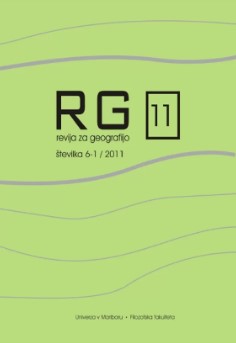Livestock revolution in tropical monsoon countries: some challenges and issues
Abstract
Livestock husbandry is one of the important demand driven sectors of agriculture in the world. It acts as a global resource in the form of food, income, nutrients, employment, insurance, clothing and others purposes. It plays a vital role in socio-economic development of the farmers. Demand of livestock products is increasing on account of increasing population, changing food habits of the middle class population and urbanization in developing Asian countries. This paper seeks to understand the pattern of growth of livestock number as well as their products and to identify the issues and challenges emerged on account of dynamics in livestock husbandry in Monsoon Asian countries. By analyzing the recorded data of FAO (Food and Agriculture Organization) in different years paper enables to state that all species of livestock showed positive growth rate with the exception of sheep and pigs. Now the livestock husbandry showing the structural change i.e. in general it is shifting from horizontal expansion to vertical expansion in most of the study region. The livestock improved tremendously and achieved a great success in raising livestock derived products. Various issues and challenges of livestock husbandry are now deserved for academic and scientific discussion as a result of livestock revolution in world in general and tropical monsoon countries in particular.
Downloads
References
Bolle, H.J et al 1986: Other Greenhouse Gases and Aerosols. Assessing their Role in Atmospheric Radiative Transfer. Bolin, B., et. al (eds.) The Greenhouse Effect, Climatic Change and Ecosystems. SCOPE Vol. 29, pp. 157-203. Wiley and Sons, New York.
Bouwman, A.F. et. al 1995: Uncertainties in the Global Source Distribution of Nitrous Oxide. J. Geophys. Res. 100: 2785-2800. https://doi.org/10.1029/94JD02946
Conroy, C. 2004: Livestock Sector Growth and Poverty, with particular reference to India, Natural Resources Institute, pp.1-2
Devendra, C. 2004: Meeting the Increased Demand for Animal Products in Asia: Opportunities and Challenges for Research, (ed. book) Responding to the Livestock Revolution: The Role of Globalization and Implications for Poverty Alleviation, ILRI, Nottingham University, pp.6-13. https://doi.org/10.1017/S1463981500041765
Enrique, M. 1990: Intensive Sustainable Livestock production: An Alternative to Tropical Deforestation, Science of Sustainable Development, Allen Press on behalf of Royal Swedish Academy of Sciences, Vol. 19, No. 8 pp. 397-400
FAO, 2002, Selected Indicators of Food and Agricultural development in the Asia- Pacific Region 1991-2001, RAP Publication, Bangkok, pp-143-162
FAO, 2009, Selected Indicators of Food and Agricultural development in the Asia- Pacific Region 1998-2008, RAP Publication, Bangkok, pp-143-162.
Steinfeld, H. 1998: Livestock Production in the Asia and pacific Region- Current Status, Issues and Trends, Spotlight (Livestock issues in Asia), FAO, No. 90. P-1.
http//www.ftp://ftp.fao.org/docrep/fao/012/i1020e/i1020e00.pdf
Iqubal, M.A 2010: Role of Livestock Husbandry on Rural Transformation in North India : A Case Study, Journal for Geography, Vol. 5-2, 2010, pp. 83-94.
Khan, N et. al 2008: Livestock Revolution in Monsoon Asia during Post Economic Reform Period, Asian Profile, Vol. 36 No. 5, PP 529-544.
Khan, N. and Iqubal, M. A. 2008: Livestock Husbandry and its Impact on Employment Generation in Aligarh District, U.P. (India), African Journal of Livestock Extension Information (AJLEX), Vol. 6, PP 20-24. http://www.ajol.info
Press.www.cababstractsplus.org/abstracts/Abstract.aspx?AcNo=20053055857
Preston, T. R. 1990: Future Strategies for Livestock Production in Tropical Third World Countries, Science of Sustainable Development, Allen Press on behalf of Royal Swedish Academy of Sciences, Vol. 19, No. 8, pp. 390-393. www.jstor.org/stable/4313747
Sugiyama, M et. al 2003: Development of Livestock Sector in Asia: An Analysis of Present Situation of Livestock and its Importance for Future Development, CiNii National Institute of informatics, Scholarly and Academic Information Navigator, Gifu city women’s College, Vol. 52, pp.1-9.
USEPA, 1995: Study of Livestock-Environment Interactions: Global Impact Domain: Methane Emissions. Working Document Livestock and the Environment: Finding a Balance. FAO/World Bank/USAID. Rome.
Copyright (c) 2011 Nizamuddin Khan

This work is licensed under a Creative Commons Attribution 4.0 International License.
